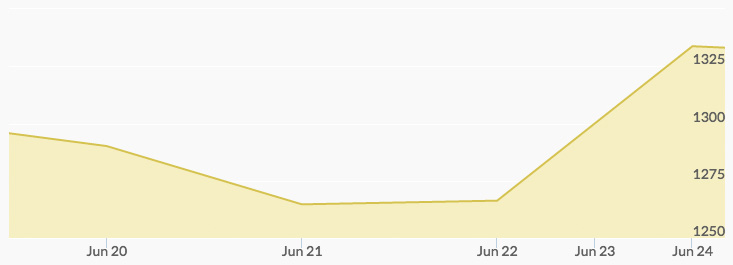
Brexit was the main catalyst in this week’s dramatic rise in gold prices that occurred toward the end of the week. Monday opened the week slightly lower, however, as the Brexit “Remain” camp appeared to be pulling strength. Thursday’s referendum captured most market attention this week. The yellow metal dropped 1 percent on Monday, down from its two-year peak last week.
Tuesday continued the same trend; crude oil recovered and gold dropped from $1,290 to below $1,270 per ounce on new poll data that predicted Britain would not leave the European Union. Wednesday saw gold prices hit a two-week low, on continued anticipation of a “no” vote. Janet Yellen made some remarks that hinted at a continued hawkish stance, but this had little effect on gold; all eyes were turned toward Britain this week.
By Thursday the votes were cast and Britain shockingly voted to leave the European Union, causing gold prices to shoot up to a two-year high over Thursday and Friday, just about touching $1,340 per ounce. What will happen for Britain and the EU next is up in the air, as the country has two years to negotiate the terms of its secession. This upset to the stability in the EU caused investors to scurry into safe haven assets, and physical gold sales were reported to have risen in London.

